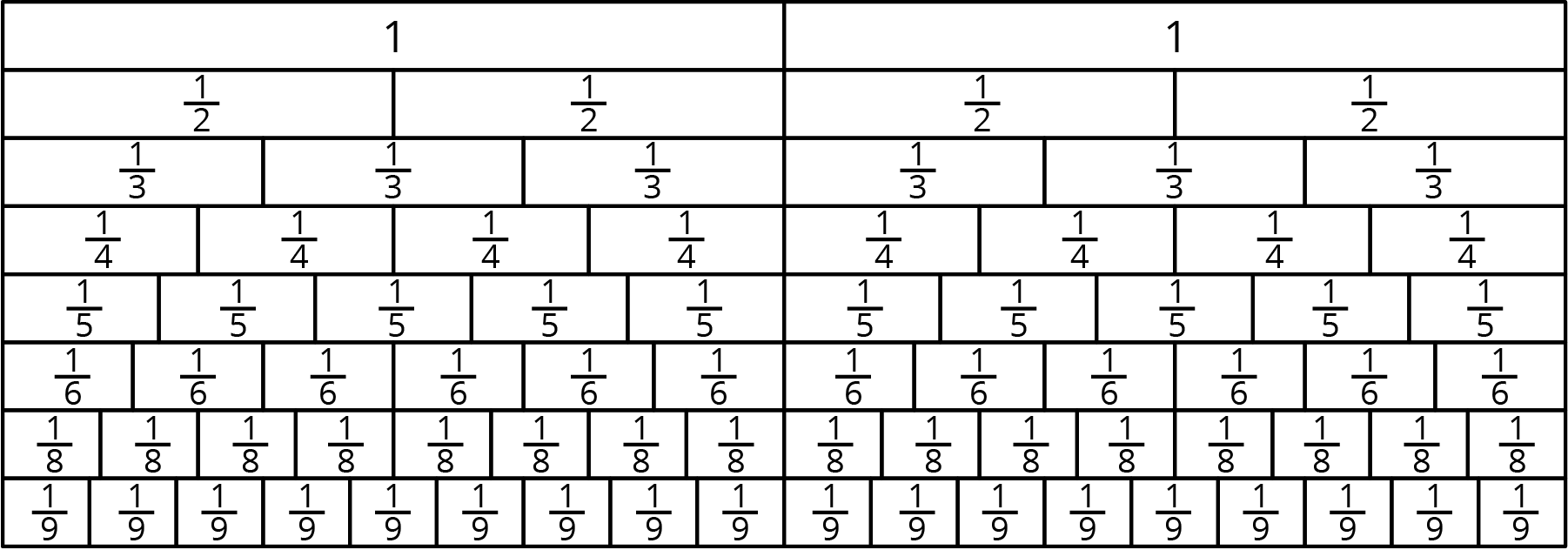Suppose one batch of cookies requires \frac23 cup flour. How many batches can be made with 4 cups of flour?
We can think of the question as being: “How many \frac23 are in 4?” and represent it using multiplication and division equations.
{?} \boldcdot \frac23 = 4 4\div \frac23 = {?}
Let’s use pattern blocks to visualize the situation and say that a hexagon is 1 whole.
Since 3 rhombuses make a hexagon, 1 rhombus represents \frac13 and 2 rhombuses represent \frac 23. We can see that 6 pairs of rhombuses make 4 hexagons, so there are 6 groups of \frac 23 in 4.
Other kinds of diagrams can also help us reason about equal-sized groups involving fractions. This example shows how we might reason about the same question from above: “How many \frac 23-cups are in 4 cups?”

We can see each “cup” partitioned into thirds, and that there are 6 groups of \frac23-cup in 4 cups. In both diagrams, we see that the unknown value (or the “?” in the equations) is 6. So we can now write:
6 \boldcdot \frac23 = 4 4\div \frac23 = 6


